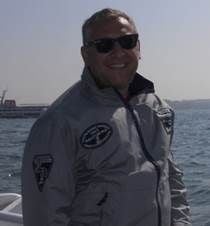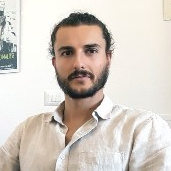Conservation of Marine Ecosystems: Selected Papers from MetroSea 2021
A special issue of Biology (ISSN 2079-7737). This special issue belongs to the section "Marine Biology".
Deadline for manuscript submissions: closed (1 December 2021) | Viewed by 26000
Special Issue Editors
Interests: ecological modeling; marine trophic webs; fishery stock assessment; marine mammal conservation; marine biodiversity; ecosystem services
Special Issues, Collections and Topics in MDPI journals
Interests: ecology and behaviour of marine megafauna; systematic and zoology of elasmobranchs, fish and marine mammals
Special Issues, Collections and Topics in MDPI journals
Interests: marine ecology; marine mammals; biodiversity; conservation; GIS; ecological modeling; population dynamics; endangered species
Special Issues, Collections and Topics in MDPI journals
Interests: benthos; anthozoa; deep sea; mesophotic; corals; conservation
Special Issues, Collections and Topics in MDPI journals
Special Issue Information
This Special Issue aims to gain contributions related to the conservation of marine ecosystems, proposed as extended abstracts at the 2021 IEEE International Workshop on Metrology for Sea.
Dear Colleagues,
The 2021 IEEE International Workshop on Metrology for the Sea (MetroSea) (http://www.metrosea.org/home) serves as a forum to gather contributions from people working to develop instrumentation and measurement methods related to the sea. Traditionally addressed to engineers and experts in measurement instrumentations and sensors, MetroSea is currently open to receiving contributions on measurements in the field of marine biology and ecology. This Special Issue aims to collect papers presented at the 2021 International Workshop “MetroSea” related to the following topics:
- Advanced techniques for the monitoring of aquatic ecosystems;
- Aquaculture;
- Biodiversity;
- Conservation;
- Ecoinformatics;
- Ecosystem services;
- Marine biology;
- Marine ecology.
Dr. Roberto Carlucci
Dr. Emilio Sperone
Dr. Giulia Cipriano
Dr. Giovanni Chimienti
Dr. Antonella Petrocelli
Guest Editors
Manuscript Submission Information
Manuscripts should be submitted online at www.mdpi.com by registering and logging in to this website. Once you are registered, click here to go to the submission form. Manuscripts can be submitted until the deadline. All submissions that pass pre-check are peer-reviewed. Accepted papers will be published continuously in the journal (as soon as accepted) and will be listed together on the special issue website. Research articles, review articles as well as short communications are invited. For planned papers, a title and short abstract (about 100 words) can be sent to the Editorial Office for announcement on this website.
Submitted manuscripts should not have been published previously, nor be under consideration for publication elsewhere (except conference proceedings papers). All manuscripts are thoroughly refereed through a single-blind peer-review process. A guide for authors and other relevant information for submission of manuscripts is available on the Instructions for Authors page. Biology is an international peer-reviewed open access monthly journal published by MDPI.
Please visit the Instructions for Authors page before submitting a manuscript. The Article Processing Charge (APC) for publication in this open access journal is 2700 CHF (Swiss Francs). Submitted papers should be well formatted and use good English. Authors may use MDPI's English editing service prior to publication or during author revisions.
Keywords
- biodiversity
- marine biology
- monitoring
- conservation
- ecosystem services










